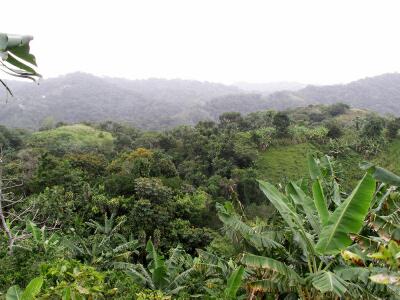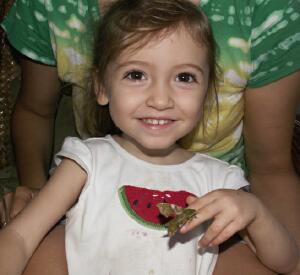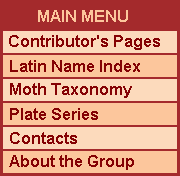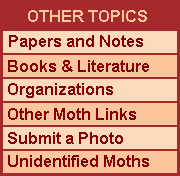

Puerto Rico is a tropical island located in the Greater Antilles, east of Hispaniola and west of the Virgin Islands. The Atlantic Ocean borders Puerto Rico to the north; the Caribbean Sea is to the south. Puerto Rico is part of the Unites States; it is a territory having political status of a "commonwealth", with a population of about four million people, most of whom are U.S. citizens.
The images shown on these pages were taken in a mountainous region of western Puerto Rico (see landscape photo). The location (18°14'N; 67°3'W) is in a tropical seasonal rainforest located at 300m and about 15 km east of the city of Mayagüez. This region is heavily forested and sparsely populated although, as is the case with many similar ecologically sensitive areas, development is encroaching upon it and the degradation or destruction of ecosystems in the area takes place daily due to the clearing and burning of land.
Moths were attracted to lights (either compact fluorescents or UV) and photographed using digital cameras with macro lenses. I started taking occasional images of moths in 2008, and began nightly photography in August 2010. Originally I took pictures wherever I found moths at rest, oftentimes under poor lighting conditions (the poorer quality images on the website are some of these early shots). After suggestions and advice from Bob Patterson, I now capture and chill the moths prior to photographing them under lights. I keep monthly visitation records for each species, with the goal of identifying resident and migration patterns for moths in this area. The climate of Puerto Rico allows year-round observations. The only truly 'bad' moth nights are in heavy wind, rain, and during tropical storms and hurricanes.


The identifications should be considered provisional; I welcome revisions from experts. My formal training is in geoscience; I study the origin and geochemistry of rocks and minerals in the Caribbean and elsewhere. The islands comprising Puerto Rico and the Greater Antilles are about 125 million years old, and originated approximately where Central America is today. Over time the Greater Antilles have shifted relative to North and South America. Tectonic evolution has thus influenced significantly the modern distribution and isolation of flora and fauna in this region.
I am grateful for the contributions others have made towards the creation of this site. Bob Patterson has been singularly instrumental in developing these pages, and inspired me to try studio photography. Nolie Schneider has provided expert image editing. David Jenkins and Brian Irish of the USDA Tropical Agricultural Research Station in Mayaguez, and Nico Franz (formerly the curator of the UPR Mayaguez invertebrate museum) are also thanked for their assistance. My wife Laura and daughters Yasmina (age 2 in photo, with Xylophanes pluto) and Samara are especially thanked for supporting my interest in moths.
|




